Information Warehouses Vs Information Lakes Vs Knowledge Lakehouses 2024 Guide
Object stores present low cost, extremely out there storage, that excel at massively parallel reads – an important requirement for contemporary knowledge warehouses. A knowledge lakehouse combines the structured querying of a DW and DL’s flexibility with raw information. So as an alternative of building a tangled bundle of a quantity of separate tools, now you can go along with a single solution that serves all your wants. By providing each access to the underlying data information and the metastore, data lakehouses serve all kinds of users, from BI developers Limitations of AI to AI engineers. Nevertheless, this hybrid strategy comes with a certain amount of complexity.
If your organization is leaning into real-time knowledge, machine learning, or open-source ecosystems, the lakehouse architecture is better fitted to future-proofing your stack. Snowflake, then again, remains warehouse-first, though it’s expanded to help semi-structured information, streaming, and knowledge sharing. It excels in person experience, governance, and efficiency for structured analytics at scale.
Knowledge Lakehouse Architecture
- On the opposite hand, information warehouses are tailor-made to structured information and work best with predefined data fashions.
- For example, a product desk might be cut up into separate tables for classes and types.
- Amplitude’s suits into any existing information setting and offers you insights into the full customer journey.
- It supports decision-making by offering historical insights, identifying tendencies, and forecasting future outcomes.
- So as a substitute of building a tangled bundle of a quantity of separate tools, you can now go with a single answer that serves all of your needs.
- In Distinction To OLAP (Online Analytical Processing), OLTP isn’t used for in-depth analytics.
While a contemporary method to data governance and intensive information testing can help improve information high quality, the best groups are leveraging information observability across their complete data stack. Information observability provides end-to-end monitoring and alerting for issues in your information pipelines, across any warehouse, lake, or lakehouse that stores your information of all types. “One measurement suits all” doesn’t apply in relation to information warehousing vs. data lakes.
There, the components are prepared for use by the chefs with none extra processing. Data lakes are a well-liked alternative for general-purpose information storage due to their low value, scalability and talent to retailer knowledge of any format. Data lakes emerged to help organizations handle the flood of massive information unleashed by Internet 2.0 and the rise of cloud and mobile computing in the late 2000s and early 2010s. Organizations discovered themselves coping with extra information than ever, much of it in unstructured formats—such as free-form text and images—that traditional warehouses cannot easily manage. Fivetran absolutely helps schema evolution and handles it like schema modifications for any other Fivetran vacation spot.
Users of a lakehouse have entry to quite lots of commonplace tools (Spark, Python, R, machine learning libraries) for non BI workloads like information science and machine studying. Information exploration and refinement are standard for a lot of analytic and data science functions. Delta Lake is designed to let users incrementally enhance the standard of knowledge in their lakehouse till it is prepared for consumption. Uncover the facility of integrating a knowledge lakehouse strategy into your information structure, including cost-optimizing your workloads and scaling AI and analytics, with all your knowledge, wherever. Because information warehouses and lakes serve completely different purposes, many organizations implement each in their data stacks.
This structured method allows information warehouses to serve as a consistent “single supply of reality,” where the information is cleaned, enriched, and validated. A data warehouse is a centralized repository and information system used to develop insights and inform selections data lake vs data warehouse with enterprise intelligence. Like an actual warehouse, information will get processed and organized into categories to be positioned on its “cabinets” that are called knowledge marts. Learn how an open knowledge lakehouse method can present trustworthy data and sooner analytics and AI tasks execution.

A schema-on-read approach gives you extra flexibility when dealing with diverse and unstructured information. Ingesting and integrating data from various sources is typically complex and time consuming, particularly when you’re coping with completely different knowledge formats and structures. Moreover, handling unstructured information generally requires extra preprocessing, leading to potential delays in information processing. Information professionals, including information scientists, might point out they benefit from the flexibility to discover, or preview, individual information or sets of information. Suppose the information warehouse and data lake approaches aren’t meeting your company’s knowledge demands, or you’re in search of methods to implement each advanced analytics and machine studying workloads in your knowledge.
When To Use A Data Lake
Warning, not all lakehouses supply this staging capability throughout the similar bodily structure. Nevertheless, this comes at a worth ― that value historically has been complexity. The knowledge warehouse is the oldest big-data storage know-how with a long history in enterprise intelligence, reporting, and analytics functions. Nonetheless, knowledge warehouses are costly and wrestle with unstructured knowledge such as streaming and knowledge with selection.
Knowledge analysts or BI engineers who want to visualize the monthly sales https://www.globalcloudteam.com/ number per area can connect their analytics or dashboarding device to generate insights in minutes. Price plays a major position when selecting between an information warehouse and a knowledge lake. Knowledge lakes typically present a more reasonably priced solution for storing giant volumes of knowledge.

Scalability And Performance Issues
Just about any knowledge analyst with a question software, specifically a SQL query tool, may fairly simply query 1,000 rows or columns of data and uncover insights. In the center of the spectrum is semi-structured knowledge or document information, corresponding to JSON recordsdata. This blog breaks down data warehouse, knowledge lake, and knowledge lakehouse concepts and the way they examine and contrast, as well as the benefits of each strategy.
Firms use information warehouses to generate enterprise intelligence (BI) insights, create financial stories, and analyze operational performance. Information warehouses are structured storage methods crafted to support the reporting and evaluation of huge datasets. They store processed and refined data, optimized for fast querying and producing business insights. Knowledge warehouses concentrate on structured data, organizing info into tables, rows, and columns, making them completely suited to business intelligence tasks. Their architecture is geared towards fast, complex queries and report era.
It’s all about selecting the choice that grants your customers essentially the most environment friendly and efficient access to knowledge, according to their individual necessities and expertise. Choosing the best architecture in the end depends on matching your knowledge capabilities with your business goals. In IBM’s Information Warehouse Engineering Professional Certificates, you’ll learn all about SQL statements and queries, how to design and populate information warehouses, and extra. Constructing the Knowledge Lakehouse.Discover the following technology of information structure with the daddy of the info warehouse, Invoice Inmon. Unlock the worth of enterprise knowledge with IBM Consulting®, building an insight-driven group that delivers business benefit. Knowledge lakehouses might help organizations overcome some of the limits and complexities of warehouses and lakes.
Industries such as expertise, e-commerce, and manufacturing typically favor information lakes because of their must process and analyze vast quantities of various knowledge. Knowledge lakes typically do not adhere to ACID properties, meaning that information in the storage can be incomplete or corrupted. That’s a limitation for exact analytics where the reliability of data operations is crucial (e.g., BI and reporting). While knowledge lakes unlock an entire sea of possibilities, there’s at all times a ‘but’. A data ingestion layer is a transition stage responsible for smooth data circulate (in batch or real-time modes) from the sources to the storage.
The data lakehouse concept has emerged as organizations faced challenges with managing and analyzing knowledge across separate data lakes and information warehouses. First launched by Databricks in 2019, the information lakehouse structure seeks to unify knowledge governance, storage, and analytics in a single platform. This approach addresses the constraints of both knowledge lakes and knowledge warehouses, providing a more versatile and efficient solution for modern information needs. A knowledge lakehouse is an rising knowledge management architecture that mixes the most effective options of knowledge lakes and information warehouses. It goals to supply the flexibility and scalability of an information lake with the structured information administration and performance capabilities of a data warehouse.
It’s additionally applicable when modernizing a legacy surroundings the place a full rewrite (e.g., of many stored procedures) would be cost-prohibitive. Information Fabric helps real-time access, federated queries, and AI-driven use circumstances through a semantic layer. In distinction, information warehouses sometimes contain higher initial investments. Their infrastructure calls for high-performance hardware and software, which could be costly to set up. The structured nature of a data warehouse simplifies information management and analysis, lowering the necessity for specialized expertise. This effectivity can offset the preliminary prices, especially for businesses that prioritize constant and reliable reporting.

